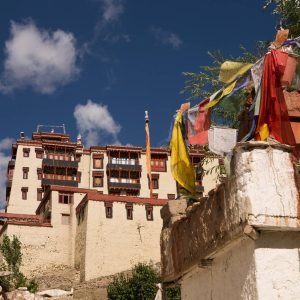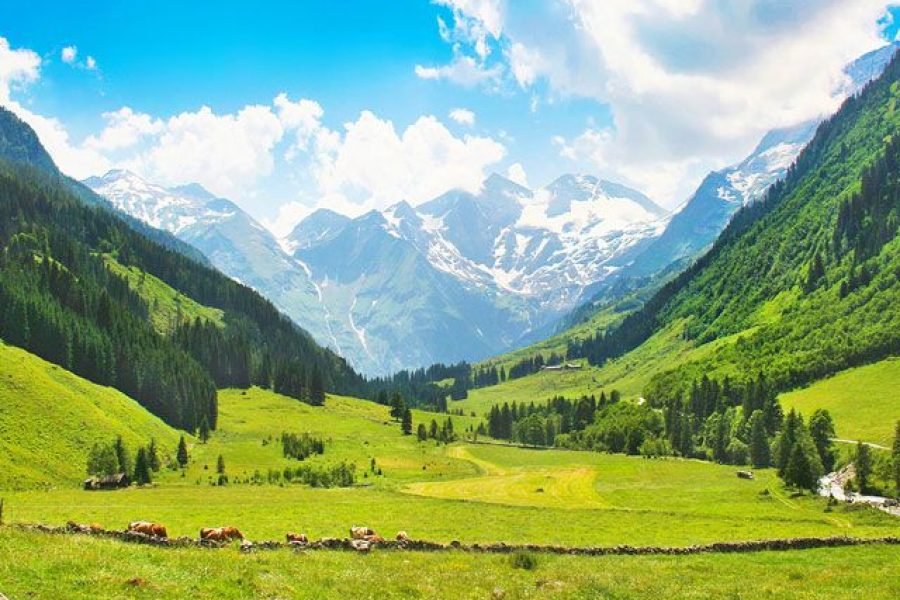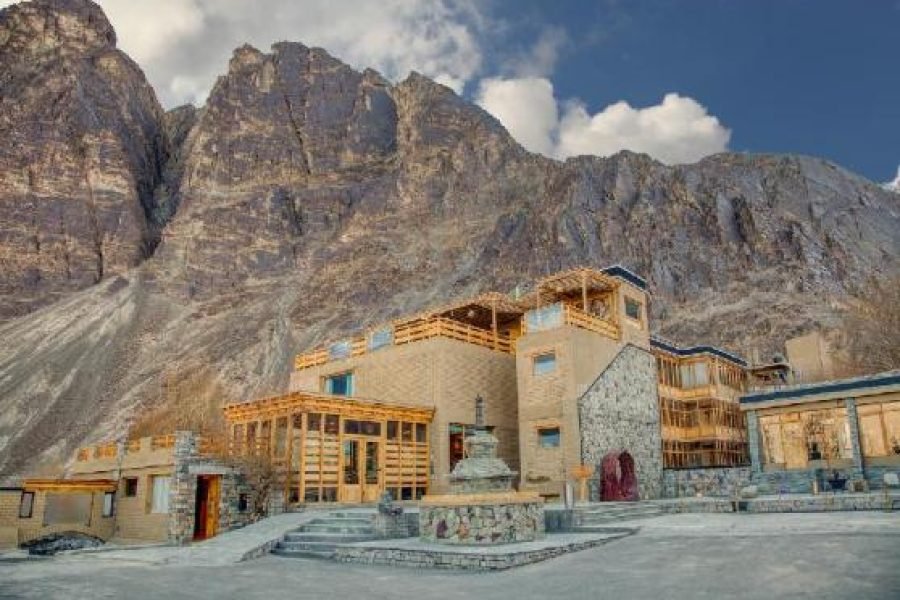Stok Monastery : A Sacred Landmark of Ladakh





Table of Contents
ToggleNestled in the serene and awe-inspiring landscapes of Ladakh, Stok Monastery is one of the region’s most iconic and culturally rich monasteries. Its remarkable history, architectural beauty, and spiritual significance make it a must-visit destination for travelers and pilgrims alike. In this blog, we are going to cover everything about Stok Monastery, from origins and architecture to its significance in Ladakh’s Buddhist heritage, including useful travel tips for visitors and the preservation of ancient culture in this region.
What is Stok Monastery?
Stok Monastery, or Stok Gompa, is an important Buddhist monastery in the Leh district of Ladakh, located in the Stok village. It is one of the last surviving Buddhist monasteries that have remained an essential part of the region’s cultural and religious life. It is located at the foot of Stok Kangri, a mountain that reaches over 6,000 meters (19,700 feet) in elevation, which provides the monastery with its magnificent views.
The monastery is a member of the Gelugpa sect of Tibetan Buddhism. Among the four main schools of Tibetan Buddhism, the monastery is a center of spiritual learning, meditation, and monastic life. This remains an important site for the local people and tourists alike who strive to preserve the Tibetan Buddhist way of life.
History and Origins of Stok Monastery
It was in the 14th century when Lama Lhawang Lotus founded this monastery. He is considered one of the Tibetan great spiritual leaders who, due to his influence, led the development of Tibetan Buddhism in Ladakh. During these years, the monastery served as a center for Buddhist teachings and religious practices and contributed much to the spread of the teachings of Buddhism throughout the region.
The Stok Monastery in its initial phase was tied to the Ladakh royalty, namely to the Namgyal dynasty. The close proximity of this monastery at Stok village with the palace of the royalties symbolises its being deeply connected with the political and religious fabric of Ladakh. It is also associated during the regime of King Tsewang Namgyal as he tried to promote the spread of Buddhism across the regions.
The historical importance of Stok Monastery is also enhanced because it is a place for the Choskor and the Thukje tradition of Tibetan Buddhism. In fact, this monastery was always a center for meditation, teachings, and Buddhist rituals since the monks continue the age-old traditions passed on from previous generations.
Architectural Marvel of Stok Monastery
The architecture of Stok Monastery is an exquisite example of Tibetan Buddhist design that combines the features of both Tibetan and Ladakhi styles. The place is so beautiful in terms of designs, colorful murals, and symbolic representation of Buddhist teachings that give one a peaceful and pious atmosphere. Some of the prominent architectural features of this monastery are:
- Main Prayer Hall (Du-Khang)
The heart of the monastery is its Du-Khang, or its prayer hall. This very spacious hall is beautifully embellished with Tibetan-style paintings of various scenes from the Buddhist scriptures, the Buddha’s life, and other influential deities in Buddhism. Such walls have vibrant paintings that make them more than just simple artistic presentations but carry deeply spiritual messages to the faithful.
Right at the center of the prayer hall is a massive statue of Buddha. It is accompanied by many other smaller statues of Buddhist deities and spiritual leaders. The place is filled with serenity, and there is no hustle anywhere. The hall is actually designed for the monks to conduct their meditation and religious performances.
- Chortens (Stupas)
Chortens or stupas are one of the significant features of Tibetan monasteries, and such a place is Stok Monastery. These spiritual buildings are built to retain the relics and symbols used for the Buddhist teachings. Those stupas at Stok hold an elegant design and carry importance from the historical and the spiritual point of view which attract visitors and worshipers to those places.
- Murals and Thangkas
One of the most striking collections at Stok Monastery is its murals and thangkas, which are traditional Tibetan scroll paintings. The artworks include scenes from the life of the Buddha, religious festivals, and bodhisattvas, who are enlightened beings that remain in the cycle of birth and rebirth to help others. The murals depict a fine level of detail with bright colors, indicating the intense devotion and the artistic traditions of Ladakh’s Buddhists.
- Rooms of the Monastic Community and Dwellings
Apart from the prayer halls, there are monks’ living quarters, classrooms, and rooms for meditation. The facilities are basic yet purposeful for a life of spiritual practice and reflection. The rooms are laid out around a courtyard, typical in Tibetan monasteries, and allow for unity and harmony within the monastic community.
Cultural and Spiritual Significance of Stok Monastery
Stok Monastery is more than a tourist place; it is a place of spirituality for Buddhist people and a repository of religious and cultural traditions of Ladakh. The monastery preserves the rich cultural heritage of Ladakh and its spiritual landscape through its important role.
- Religious Role in Ladakh
To the people of Ladakh, Stok Monastery is not only a place for religious rituals but also a symbol of the deep Buddhist roots of the region. It serves as a center for monastic education, where young boys are taught Buddhist philosophy, scriptures, and meditation techniques. The monks living here maintain a strict schedule of prayers, rituals, and meditation, offering a sense of continuity in the religious life of Ladakh.
- Festivals at Stok Monastery
The prominent festival at Stok Monastery is the Stok Guru Tsechu Festival, which is celebrated annually in the month of either February or March. The festival is a great celebration that celebrates the teachings of Guru Rinpoche, or Padmasambhava, considered a great figure in the Tibetan Buddhist world. Cham dances are performed by the monks in the elaborate costumes with masks during the festival. The Buddhist doctrines, translated into dances, depict warding off evil spirits while ushering prosperity and peace in the community.
Another aspect of the festival gives the visitors a chance to experience Ladakhi culture from its very roots: through some very vibrant colors, rich tradition in music, and vivacious dances. Witnessing this sacred event has often proven to be unforgettable to someone who gets lucky.
- Pilgrimage Site
For Tibetan Buddhists, Stok Monastery is a major place of pilgrimage. As it is relatively close to holy places such as the Shey Palace and Thiksey Monastery, religious pilgrimages throughout Ladakh usually focus on this monastery. Many people visit the monastery in order to pray, offer sacrifices, and receive good luck from the monks; therefore, they are able to attain spiritual merit and peace.
Visiting Stok Monastery: What to Expect
Stok Monastery is a lesser-known destination as compared to other famous monasteries in Ladakh like Hemis and Thiksey. Yet, this remoteness adds to its appeal and makes it a tranquil haven for those who are looking to get away from the crowds of more popular tourist destinations. Here’s what you can expect when visiting:
- Getting to Stok Monastery
Stok Monastery is approximately 15 kilometers (9 miles) from Leh, the capital city of Ladakh. It is very accessible by taxi or private vehicle, which takes approximately 30 minutes from Leh. The drive itself is spectacular views of the surrounding mountains and valleys, making it a scenic journey.
- Best Time to Visit
The best time to visit Stok Monastery is during the summer months, from May to September, when the weather is mild and conducive to travel. The Stok Guru Tsechu Festival, usually held in February or March, is also a great time to visit if you’re interested in experiencing Ladakh’s vibrant cultural and spiritual festivals.
- Things to Do at Stok Monastery
Spend a couple of hours discovering the monastery-from the big prayer hall to the stupas and the murals. In case you need some explanations of the monastery’s history or teachings, be sure to approach the monks who stay within.
Photography: The monastery provides amazing vistas of the surrounding mountains, valleys, and traditional Ladakhi architecture. Whether one is a professional photographer or an amateur traveler, there are countless opportunities to capture the beauty of this unique location.
Engage with the Monks: In addition, the monks at Stok Monastery are known for their friendliness and cordiality. Get to know about their life and practices as part of their spiritual journey.
Hiking around Stok: For avid hikers, there is plenty of scope for hiking from the monastery. There are several trails around the place that take you to the bottom of Stok Kangri, one of the highest trekking peaks in Ladakh.
Conclusion
Stok Monastery is a culmination of history, culture, religion, and natural beauty. It offers visitors a rare glimpse into the traditions and way of life of Ladakhi Buddhists, providing a peaceful sanctuary for contemplation and meditation. Whether you’re a history buff, a spiritual seeker, or an adventure traveler, Stok Monastery offers something for everyone. Its remarkable architecture, deep spiritual significance, and tranquil surroundings make it one of Ladakh’s most treasured landmarks. If you find yourself in Ladakh, a visit to Stok Monastery is an experience you won’t want to miss.
FAQ's
1. What is Stok Monastery?
Stok Monastery, also known as Stok Gompa, is a Tibetan Buddhist monastery located in Ladakh, India. It is one of the most significant monasteries in the region, known for its historical and spiritual importance.
2. Where is Stok Monastery located?
Stok Monastery is located in the Stok village, around 15 kilometers south of Leh, the capital city of Ladakh. It is nestled at the base of Stok Kangri mountain.
3. How do I get to Stok Monastery?
You can reach Stok Monastery by taxi or private vehicle from Leh. The drive takes about 30 minutes. You can also opt for a scenic bike ride or a short trek for a more adventurous experience.
4. When was Stok Monastery built?
Stok Monastery was founded in the 14th century by Lama Lhawang Lotus, a significant figure in Tibetan Buddhism, and has since been an important spiritual hub in Ladakh.
5. What is the significance of Stok Monastery?
Stok Monastery is significant both culturally and religiously as it serves as a center for Tibetan Buddhist teachings, meditation, and practices. It also holds great importance for the Ladakhi people due to its connection with the royal family and its preservation of Buddhist traditions.
6. Which Buddhist sect does Stok Monastery belong to?
Stok Monastery belongs to the Gelugpa sect of Tibetan Buddhism, which is one of the four major schools of Tibetan Buddhism.
7. What can I see inside Stok Monastery?
Inside Stok Monastery, visitors can see beautiful murals, thangkas (Tibetan scroll paintings), statues of Buddha and other Buddhist deities, and stunning prayer halls. The monastery also features stupas, monastic rooms, and a peaceful atmosphere for meditation.
8. What is the Stok Guru Tsechu Festival?
The Stok Guru Tsechu Festival is an annual religious and cultural event held in honor of Guru Rinpoche (Padmasambhava). During the festival, monks perform traditional Cham dances and rituals, and the event attracts both locals and tourists.
9. When is the best time to visit Stok Monastery?
The best time to visit Stok Monastery is during the summer months (May to September) when the weather is pleasant. The Stok Guru Tsechu Festival, which is usually held in February or March, is also a fantastic time to experience Ladakhi culture.
10. What is the architecture of Stok Monastery like?
Stok Monastery features traditional Tibetan Buddhist architecture, with intricate murals, colorful thangkas, stupas, and a large prayer hall. Its design follows Ladakhi and Tibetan architectural styles, creating a serene and peaceful environment.
11. Is there an entrance fee for Stok Monastery?
There is typically no formal entrance fee to visit Stok Monastery, but donations are encouraged to help with the maintenance of the monastery and its activities.
12. How long does it take to visit Stok Monastery?
A visit to Stok Monastery typically takes 1-2 hours, depending on your interest in exploring the monastery and engaging with the monks. If you’re attending the Stok Guru Tsechu Festival, expect to spend several hours at the monastery.
13. Can I take photos inside Stok Monastery?
Photography is generally allowed in the monastery, but it’s recommended to be respectful of the spiritual space. Always ask permission before taking pictures of the monks or during religious ceremonies.
14. Is Stok Monastery a popular tourist destination?
Yes, Stok Monastery is a popular tourist destination, especially for those seeking spiritual experiences and cultural exploration in Ladakh. It’s less crowded compared to other major monasteries in the region, offering a peaceful atmosphere.
15. Can I stay overnight at Stok Monastery?
While Stok Monastery itself does not offer accommodations for tourists, there are many guesthouses and hotels in the nearby Stok village or Leh city where visitors can stay overnight.
16. What is the best way to explore Ladakh’s monasteries, including Stok?
The best way to explore Ladakh’s monasteries is by hiring a taxi or renting a bike. Many tourists also opt for guided tours, which help in learning about the history and significance of each monastery.
17. Is Stok Monastery open year-round?
Yes, Stok Monastery is open year-round. However, the best time to visit is from May to September when the weather is ideal for sightseeing and outdoor activities.
18. What are the key attractions around Stok Monastery?
Key attractions near Stok Monastery include Stok Kangri mountain, Shey Palace, Thiksey Monastery, and the Leh Palace. All of these sites are within a short distance and offer an insight into Ladakhi culture and history.
19. What is the role of monks at Stok Monastery?
Monks at Stok Monastery engage in various religious practices, including prayers, meditation, and teaching. They also perform important rituals during religious festivals and ceremonies.
20. What is the cultural importance of Stok Monastery for Ladakhis?
Stok Monastery holds immense cultural significance for Ladakhis as it is not only a spiritual center but also a place tied to the royal family of Ladakh. It helps preserve Ladakhi traditions and Buddhist culture.
21. Is it possible to trek to Stok Monastery?
Yes, visitors can trek to Stok Monastery from Leh or other nearby locations. The trek to Stok offers stunning views of the surrounding mountains and valleys, making it an attractive option for adventure travelers.
22. Can I interact with the monks at Stok Monastery?
Yes, visitors are encouraged to interact with the monks at Stok Monastery. They are usually friendly and open to discussions about Buddhism and the monastery’s history. Just ensure to be respectful of their daily routines.
23. What should I wear when visiting Stok Monastery?
When visiting Stok Monastery, it’s recommended to dress modestly, covering your shoulders and knees. This shows respect for the sacred nature of the site and its spiritual significance.
24. Can I buy souvenirs at Stok Monastery?
Yes, there are small shops around Stok Monastery where you can purchase Tibetan Buddhist artifacts, prayer wheels, thangkas, and other souvenirs to remember your visit.
25. What is the spiritual importance of Stok Monastery?
Stok Monastery is a vital spiritual hub for the Ladakhi people, serving as a place for meditation, study, and religious ceremonies. It is an essential site for pilgrims who seek spiritual blessings and a deeper connection to Buddhist teachings.
How to book Tours for Ladakh with Charzan Holidays?
For a seamless and exceptional booking experience, contact Charzan Holidays at reservations@charzan.in or call us at +919622224473









0 Comment